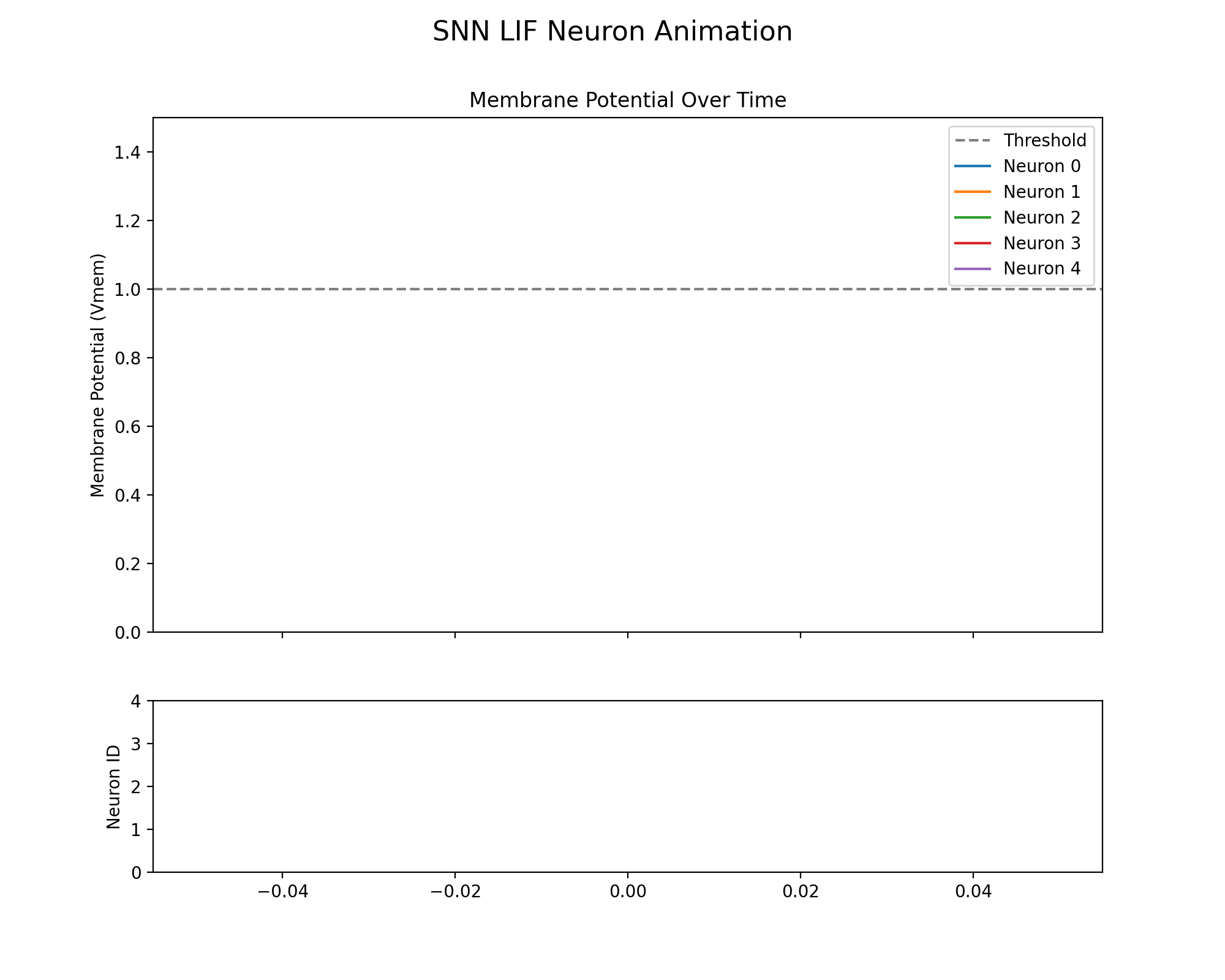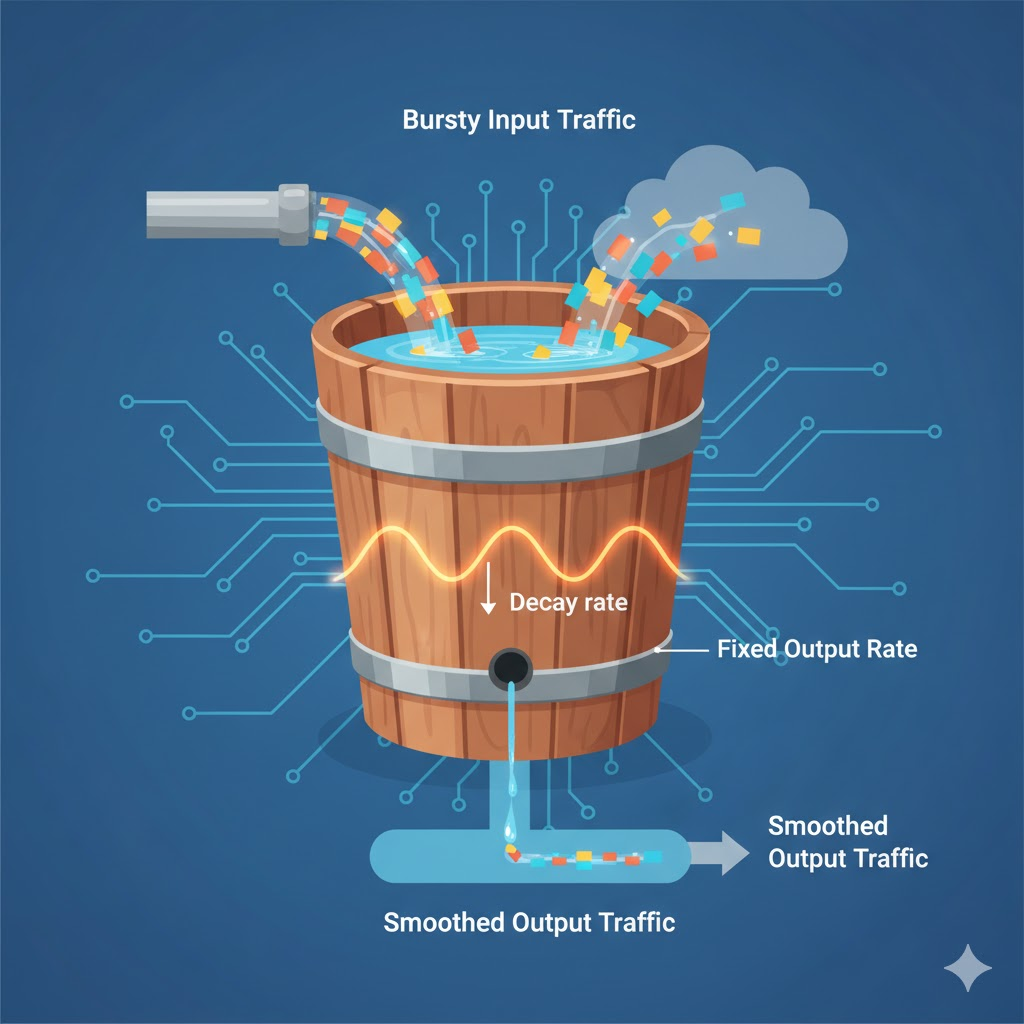Spiking Neural Network (SNN)
, , 2024
⚡ Spiking Neural Network (SNN)
“Not all neurons fire all the time — some wait for the right moment to spike.”
— Understanding how the brain really computes.
An SNN (Spiking Neural Network) is a type of artificial deep learning for classification that uses spikes as input instead of continuous values.
The key concept:
🧩 The signal is not a continuous value but a discrete spike train over time.
🎞️ SNN Simulation
To understand how SNNs work, we simulate them using the Leaky Integrate-and-Fire (LIF) neuron —
the most common and computationally efficient model in large-scale SNNs.
💡 Why LIF?
Because it’s the simplest and ideal for initial conceptual studies.
 The animation above visualizes how SNNs process information through time and event-based communication (spikes) instead of continuous signals.
The animation above visualizes how SNNs process information through time and event-based communication (spikes) instead of continuous signals.
There are two figure sections:
- Membrane Potential Line ($V$)
- Discrete Spike Impulses (Events)
🧩 Membrane Potential Line ($V$)
A continuous line starting near a resting potential ($V_{rest}$).
It represents the neuron’s “readiness” to fire.
⚡ Discrete Spike Impulses (Events)
Sharp vertical lines (spikes) appear when the membrane potential hits the threshold ($V_{thresh}$).
At that moment — the neuron fires!
🕰️ Two Core Dimensions of SNNs
SNNs differ from standard ANNs in two crucial ways: Time and Rate.
⏳ 1. The Time Dimension — “How it computes”
Traditional ANN:
Output = Activation(Weights × Input)
SNN:
The decision unfolds over many time steps, requiring the neuron to remember its state ($V$) between steps. The rising and falling potential line shows this evolving memory.
🧠 2. The Information Coding — “What it computes”
In rate coding (common for classification tasks like the Iris dataset):
Training/Inference: The neuron that fires the most spikes (highest frequency) during the simulation window wins.
Decay Rate’s Role: The decay (leakage) controls how long a neuron “remembers.” A fast decay = short memory → reacts only to strong inputs.
🔑 Key Takeaway: An SNN neuron can communicate only by overflowing its internal “bucket.” Strong, constant input → frequent (high-rate) spiking Sparse input → low-rate, occasional spikes
If this reminds you of the leaky bucket algorithm, you’re right — they share the same intuition.

SNN vs Other Model Architectures
Artificial Neural Networks have been the foundation of AI, known for their conventional approach where input data consists of real-valued numbers, suitable for tasks like image recognition.
| Aspect | ANN | RNN | SNN | CNN | |
|---|---|---|---|---|---|
| Full Name | Artificial Neural Network | Recurrent Neural Network | Spiking Neural Network | Convolution Neural Network | |
| Information Flows | Feedforward: Data flows in one direction (Input $\rightarrow$ Hidden Layers $\rightarrow$ Output). No internal memory or loops. | Recurrent Loop: Has a hidden state (memory) that feeds back into the network, allowing it to process sequential inputs. | Event-Driven Spikes: Neurons only communicate when their internal potential reaches a threshold (a “spike”). Asynchronous and sparse computation. | ||
| Data Type | Static Data: Tabular data (rows/columns), simple classification/regression. | Sequential Data: Time-series, sensor readings, logs, speech, video frames. | Temporal/Sparse Data and Neuromorphic Hardware. Real-time, low-power sensor data. | ||
| Example Use Case | Network Fault Classification (e.g., Is this log data a ‘Hardware’ or ‘Software’ fault?) | Traffic Forecasting (e.g., Predicting bandwidth demand next hour). Channel Prediction (forecasting signal quality). | Edge AI/Low-Power RAN: Real-time, energy-efficient processing on low-power devices (e.g., anomaly detection on a 5G small cell). |
Why are SNNs a Cutting-Edge Model?
SNNs bring us closer to how biological brains compute — asynchronously, sparsely, and efficiently. This makes them a cutting-edge area, especially for “edge computing” and “next-generation” low-power devices.
The Neuron: Unlike ANNs/RNNs that use continuous values (like a voltage level), SNNs communicate using discrete, binary spikes (like a sudden pulse) when a membrane potential is reached.
Core Strength: Extreme Energy Efficiency. Because neurons compute only when spikes occur, SNNs are event-driven → perfect for edge devices and neuromorphic hardware.
Core Limitation Maturity & Training. SNN training is less mature and more complex, often achieving lower accuracy compared to optimized ANNs/RNNs — but it’s improving rapidly.
🧠 In short: SNNs are the bridge between biological inspiration and neuromorphic intelligence — paving the way for the next era of low-power, event-driven computing.
